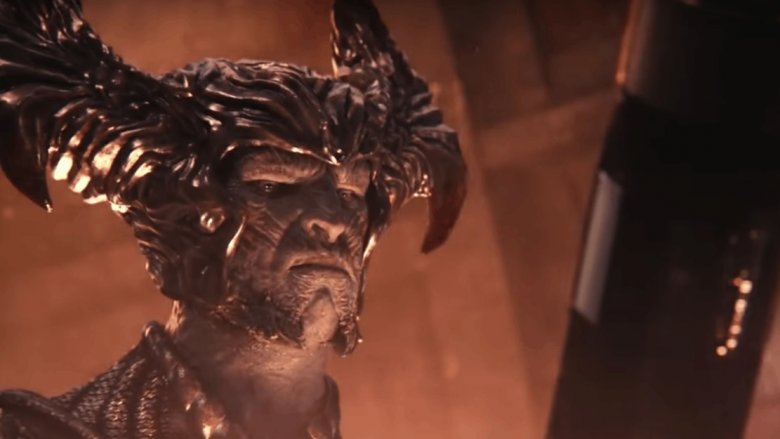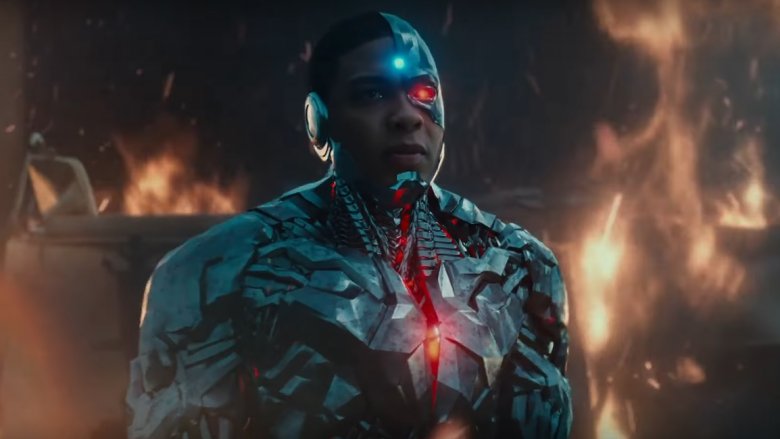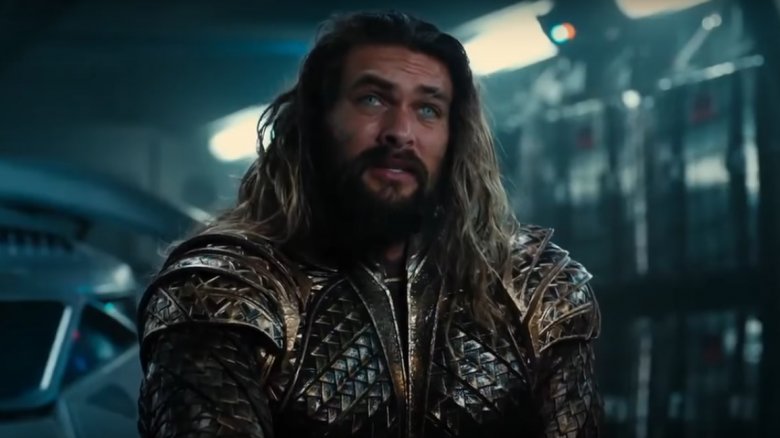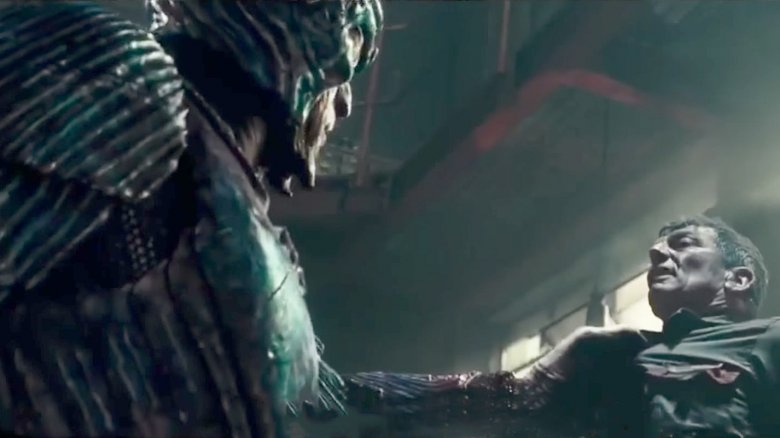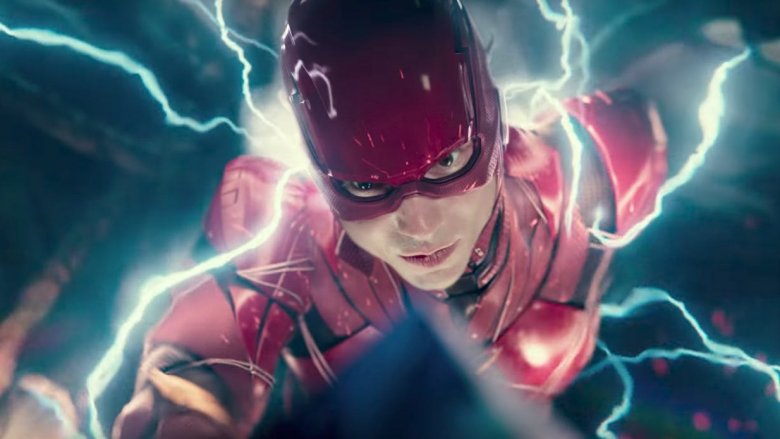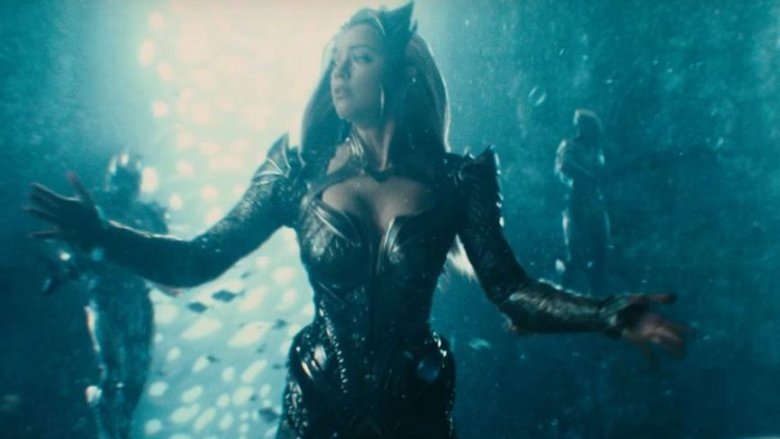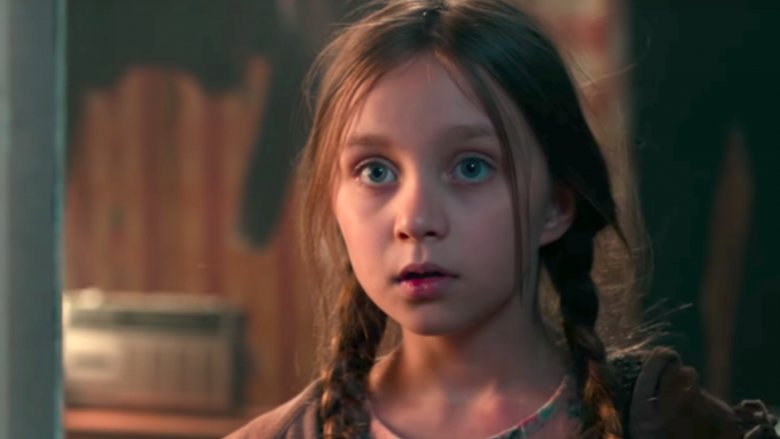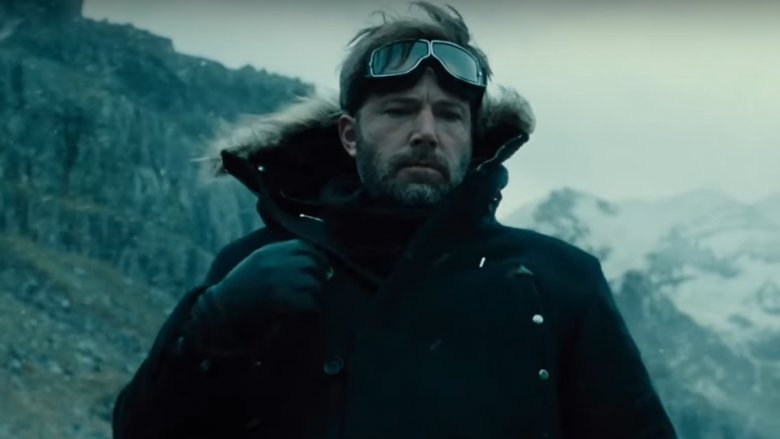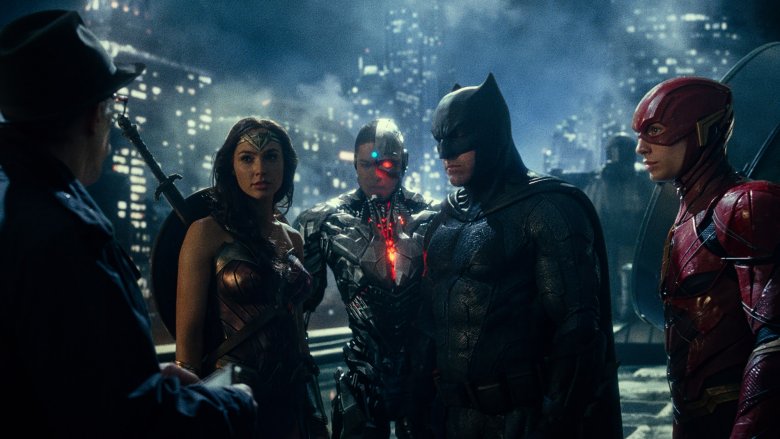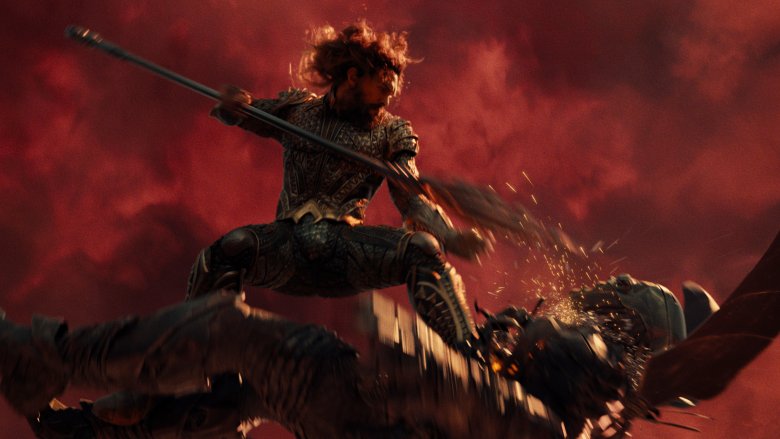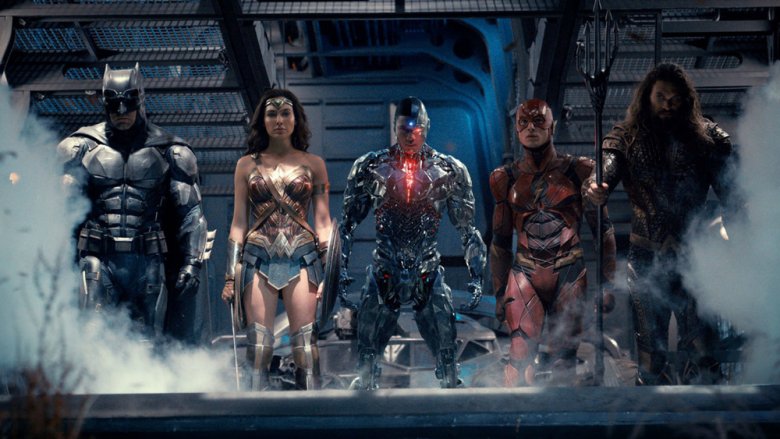Things That Upset Justice League Fans
Though not as much of a misfire as Batman v Superman, few would say the Justice League project was a success. Riding hot on the coattails of Wonder Woman's fantastic reception, fans were hopeful it could continue the DCEU's course correction and bring the company's heroes back to prominence and critical praise. Yet here we are, with Justice League going down as the first DCEU movie to open under $100 million domestically over its debut weekend. Couple that with the negative reviews, and it's painstakingly clear something went wrong. Wondering which factors are primarily to blame? These fan complaints are a good place to start when trying to answer the question of what brought down the League.
The bad CGI
There's no getting around it. The biggest, most glaringly obvious issue with Justice League, something that has bothered critics and audiences alike, is the bad CGI. In the year 2017, it takes a very special set of circumstances for a major movie studio to put out a tentpole blockbuster with painfully sloppy visual effects. Somehow the stars aligned and Justice League ended up being an unfortunate example of this phenomenon.
From the beginning, fans were worried by Cyborg's shiny, cartoonish CGI body. This fear was only exacerbated by the widely publicized situation regarding Henry Cavill's digitally erased Mission: Impossible mustache, a talking point we now refer to as Henry Cavill's CGI Shrek face. On one hand, it helped take attention away from Cyborg's visual misfire, but it only added to the rushed CGI work that dealt a serious hit to the film's overall presentation. When people were more driven to talk about Cavill's awkward computer-generated upper lip than they were to talk about the quality of the movie, it was clear there was an issue.
It's a sad situation, as there are actually some cool effects in Justice League—stunning visuals that demanded months of hard work from very talented people. Unfortunately, Cavill's MS Paint mouth, Cyborg's design, and more than a few underdeveloped CGI action shots—particularly those relating to widely panned villain Steppenwolf—have overshadowed the good aspects and made for one pretty rough reputation.
The short runtime
It seems Warner Bros. didn't learn much from Batman v Superman, a movie that garnered praise for a lengthy director's cut that fixed a lot of plot issues created by the theatrical version's truncated runtime.
Instead, the studio took the philosophy that ruined Batman v Superman's theatrical cut and decided to double down on it, leaving Justice League in an even more chopped-up, incoherent state than its predecessor thanks to the studio demanding a runtime of under two hours. (Justice League runs exactly one hour and 59 minutes long.)
Which scenes fell victim to this chopping block mentality? Well, a number of character-building moments for Cyborg and Flash, for starters. But a far more problematic series of cuts seem to have been made to the Atlantis portion of the film, relegating the entire setting to not much more than an awkward action set piece.
A forgettable villain
Steppenwolf, like many other forgettable superhero movie villains, represents a missed opportunity. He could've been to the Justice League what Loki was to the Avengers, had the writers given him more of a personality. Instead, what we got was a by-the-numbers CGI goober who mumbles, grumbles and occasionally attacks things. Steppenwolf is as standard as they come: he's in search of some all-powerful plot MacGuffin, hates everyone and wants to take over the planet. In no particular order or grouping, that sums up the missions of Ronan the Accuser, General Zod, Thanos, Kaecilius, Ultron, Enchantress, Red Skull, and Loki. The difference with Loki, however, is that he had a vibrant and richly complex personality, one that shined through the otherwise generic archetypal villain slot he was tasked with filling. Unfortunately, instead of another exception to the rule, Steppenwolf is just a statistic for the argument that superhero movies tend to have overwhelmingly bland, one-dimensional villains.
The rampant plot conveniences
Simply put, Justice League's narrative is sloppy. Think about the movie's Mother Boxes. These three cubes were supposed to be the most expertly hidden items on Earth, yet one of them is buried a few inches in the dirt where any random passerby might stumble on it. Also, the plot fails to explain why Steppenwolf is only coming to reclaim said cubes now, rather than any other time over the past few thousand years.
The immediate plot is also riddled with issues. The biggest one? Flash. There's nary a bad situation that Flash couldn't have solved, were the writers to have kept his power levels consistent. An example of this is when Steppenwolf snatches a Mother Box right out from under the League's nose. Flash could've, and should've, easily zapped over to Steppenwolf before he got away and just snatched the box right back. And speaking of Mother Boxes (again), at no point does the story explain why Batman and friends suddenly realize they can revive Superman with one. Seriously, the notion of bringing someone back to life was not a thing within this universe up until this magic revelation.
The Atlantis scene
If Justice League's Atlantis scene felt kind of disappointing and didn't make much sense to you, no worries: a lot of people felt the same way, including the movie's own Jason Momoa, who admitted that Atlantis didn't get the time it needed in Justice League—and that what made it into the theatrical cut only represents a portion of what they actually filmed. This is why the Atlantis segments look so jumbled in the film, as well as why certain character interactions don't make enough sense (looking at you, Mera). There was a lot more to the the scene, including a cameo by Willem Dafoe's character, that we didn't get to see.
Would the missing footage have better rounded out the setting and allowed it to fit more sensibly within the context of Justice League's plot? Undoubtedly. Will we ever get to see it? Unlikely.
The random Russian family
You'd be hard-pressed to find a fan critique of Justice League that didn't at least mention the Russian family, the movie's silliest inclusion. In a film where it's painfully obvious that a lot of important scenes got cut to shave down the runtime, the powers that be chose to leave in these random people, who exist solely to be rescued during the finale. The family doesn't just appear once or twice, either—they come up again and again, just so the heroes have a specific group of people to save (since the entire planet wasn't already enough).
Could that screentime have been spent more wisely on, say, anything else? Yes. Bolstering Atlantis seems like a perfect example of where those precious minutes could've been better allocated. Alas, the studio felt differently. This was likely Warner Bros. trying to redeem themselves after the multitude of "Age of Ultron's Avengers cared more about civilians than Man of Steel's Superman" criticisms from a few years ago. Since Joss Whedon wrote and directed Age of Ultron, it's not hard to surmise that Warner Bros. wanted some of that same humanizing touch for their own project when they brought Whedon on board for Justice League.
Ben Affleck's performance
As plenty of people have pointed out, it definitely felt like Ben Affleck wasn't giving it his all during this go-around as the caped crusader. It's no secret that the general response to Batman v Superman shook him up, but it hurts to watch him throw in the towel so shamelessly. It was bad enough when he stepped down from directing, then writing, then possibly even starring in the solo Batman movie, but watching him phone it in for Justice League stung even more. For a guy who claims to see just how lucky he is to get to play Batman, he sure didn't look very dedicated to the job throughout most of Justice League. Needless to say, fans were right to be upset with Affleck's unenthusiastic performance. If he's going to keep the cowl, he needs to put in the work.
The Avengers-ization of the film
There's only one movie franchise that will work after you slap an Avengers paint job on it, and that's ... well, that's the Avengers. That's why the Marvel team-up flicks have succeeded: they were built from the ground up to be banter-filled, fun-loving ensemble adventures.
This isn't the case with the DCEU, where franchise steward Zack Snyder has taken a darker, more somber approach. Sadly, a family tragedy forced him to step away from Justice League, creating a void the studio filled by bringing in Joss Whedon—whose lighter, quippier style has paid huge dividends for Marvel's Avengers movies, but here led to a poorly blended movie that reeks of tampering. In the company's haste to capture some of the whimsicality and humor of Marvel's flicks, they inadvertently forgot what set them apart in the first place. Their universe's notoriously grim aesthetic was, if nothing else, a signifier that their films weren't Marvel copycats—they were something unique. By bringing in Whedon, they negated one of their biggest selling points, and inadvertently turned their make-or-break DC film into an inferior version of Marvel's Avengers movies.
The diminution of Snyder and tonal consistency
Love or hate Zack Snyder, the man has some loyal fans. His uniquely dark and gritty style has won over a large sect of DC diehards, and it's obvious why plenty of these fans were upset by the Whedon-flavored humor in Justice League's theatrical cut—and easy to understand why they petitioned for the release of a Snyder-only version. Whether such a cut even exists is besides the point—what matters is that more than 150,000 fans (and counting!) demanded it. And it makes sense—a Snyder-only Justice League would be a very different movie, if only because it would have tonal consistency. Even if it was as dark as Batman v Superman, at least it would have a singular atmosphere.
This is another sticking point with fans: while a lot of them love Snyder's darker work, they'd be fine with something cheerier like Wonder Woman, provided it's as consistent as that movie was. Director Patty Jenkins made sure Wonder Woman had a constant sense of optimism, a mood that guided the whole story. That's what the fans really want. Give them Snyder, give them Jenkins, give them whomever. They just want to see a director's true, singular vision brought to life.
A missed opportunity
Fans know this was a missed opportunity of massive proportions—and Warner Bros. brought this on themselves. Between reportedly forcing Snyder to adopt a different style, rushing reshoots so executives wouldn't have to bump the release date and lose their bonuses, and meddling with the film's development at every possible junction, the studio was all but asking for a mess.
It's painful for fans to watch their favorite superheroes being mismanaged, which is an endemic problem at Warner Bros. Both Suicide Squad and Justice League were fraught with behind-the-scenes production drama, with execs demanding changes that clashed with directors' visions. And before that, when the studio offered creative autonomy to their employees, it resulted in the highly divisive Man of Steel and Batman v Superman. It's clear they have a lot to learn—and to their credit, they seem to be taking a long, hard look at where the DCEU needs to go from here. Here's hoping it ends up giving fans the truly satisfying superhero experience they deserve.
